Today we want to talk and educate you on Meniscus tears, and what they mean for your dog. Say you just got back from a visit to your vet, to find out your dog has a CCL tear with a meniscal tear as well. Now what? Your vet I am sure has gone over all of the surgical implications for this problem I am sure, but have they explained what the meniscus is?
How important it is to have in our knee, or what the function is? No, most likely they have quoted you for removing the meniscus, and the CCL repair only. Now I do know many Veterinarians that will try conservative management first, and a very huge thank you to those vets!
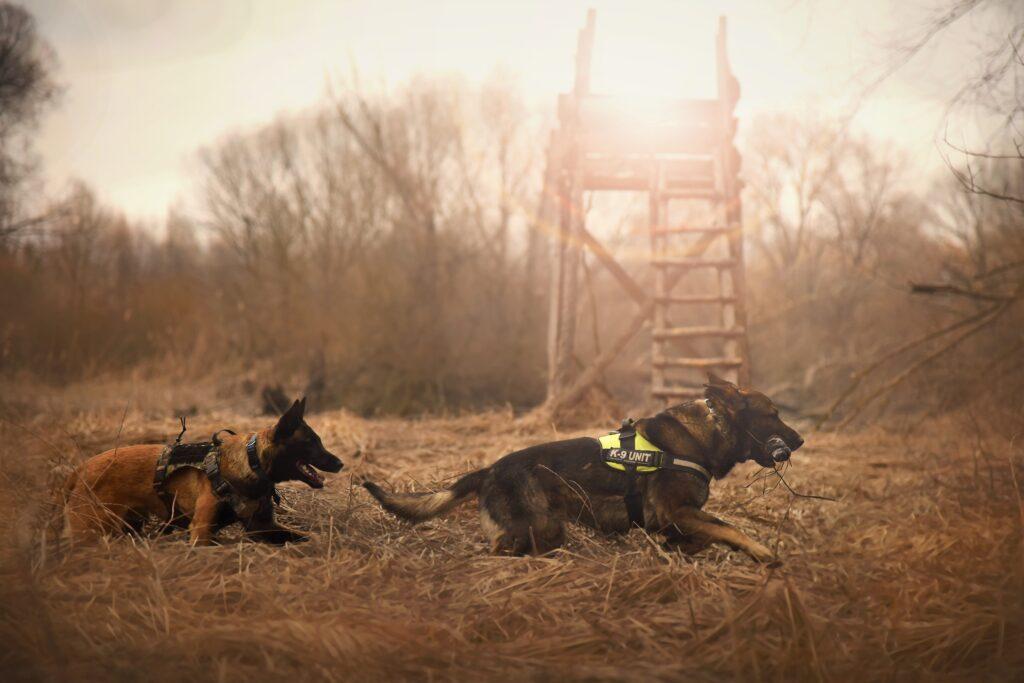
Well, you are in the right place. Our goal at Posh is to give you, as the dog mom and dad, options. Yes, you heard me, there are options with a Meniscus tear, not just surgery. Think of yourself for a minute. If you go into any orthopedic Doctors office, would they simply take an xray and schedule you for immediate removal of your meniscus? Absolutely not. There would be follow up appointments, probably an MRI to confirm, and then they would go over the options. Yes, there is that word again. Options.
Well, There are actually 2 menisci in each knee. The Menisci is a C shaped component made up of cartilage, and composed of collagen and joint fluid. 70% of the menisci is made of fluid that will compress with normal movement and release synovial fluid into the joint so that the knee can easily move. They act as our shock-absorbers and buffers, like in a car or truck.
With a CCL tear, it is very common to have a meniscal tear. There are several grades of tears, from a small tear, toa complete folding over of the meniscus. In most cases, the patient will have a minor tear. With this you may hear a pop or clicking sound. These tears are minor, and do well with bracing and Physical Therapy and Adequan Injections.
You can see now how it is very important not to completely remove the meniscus, as some vets may suggest prematurely. Now if the meniscus is folded over, usually you will see the knee sticking and unable to bend correctly. This is a surgical issue, and will need corrected.
Removing the meniscus almost always leads to arthritis and chronic lameness, as you just took out the joint’s buffer. Only if the meniscus has folded over, and I have seen this only twice in over 4,000 patients, will you need to consider removal.
It will take several months to heal, but healing is possible! Usually bracing for 12 months during activities, along with supplements and a good diet are enough to let the meniscus recover. Let us know if you have any questions, and we are happy to help your dog!
Nikki, Posh Lead Veterinary Technician
For more informaton please contact us through our contact form or visit our Facebook Page.
Read reviews check out our Google Reviews online. Click Here
Today I would like to discuss bilateral injuries with you. First off, once a patient has a CCL injury, there is a 50% chance or greater of the second knee having a tear.
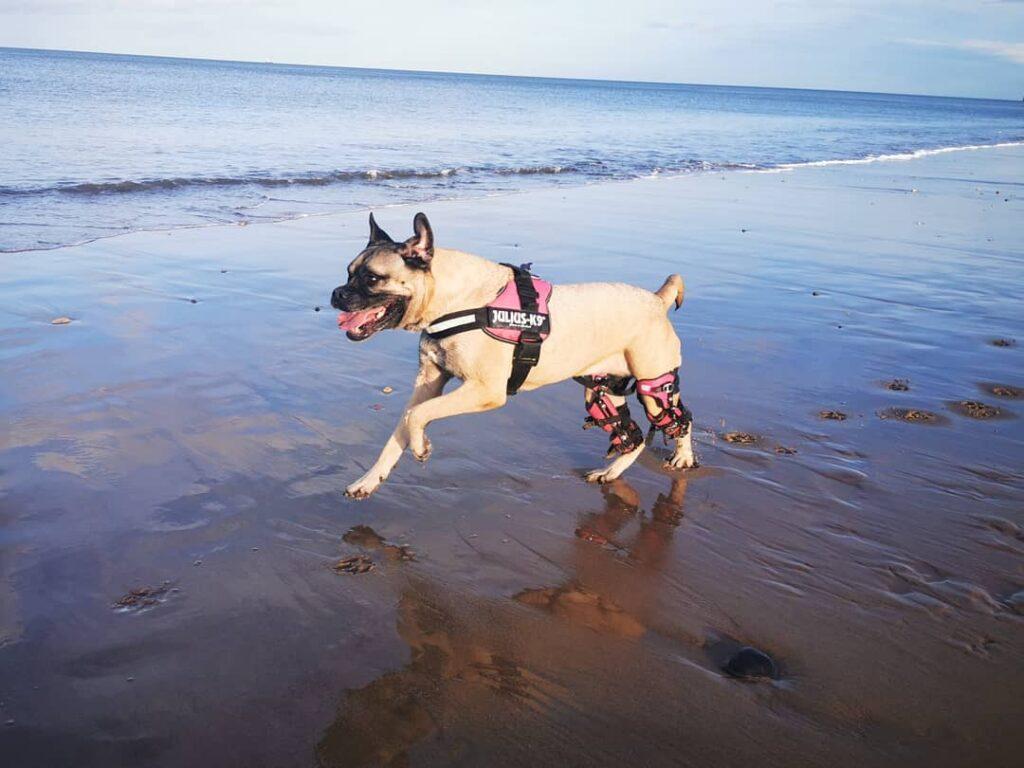
This goes up with surgery, due to the overcompensating and atrophy that develops with post-op patients, and can decrease with bracing.
Lots of things can factor in as to why a patient is now bilateral. Genetics may predispose our pups, such as bully breeds, as well as early spay/neuter, diet, etc.
So, weather your dog had surgery, and now the second knee has gone out, or both were close together, a knee brace would still be the best and most conservative option. Please let me know if you have any questions, and give your dog a Big Hug for us!
Nikki, Posh Lead Veterinary Technician
If you would like more information contact us through our contact form or visit our Facebook Page.
Read reviews check out our Google Reviews online. Click Here
Let’s talk about Adequan today, and the many benefits it has! Another name for it is Cartrophen, for those in Canada or other countries.
Adequan is an injection given either in the muscle (most common) or under the skin.
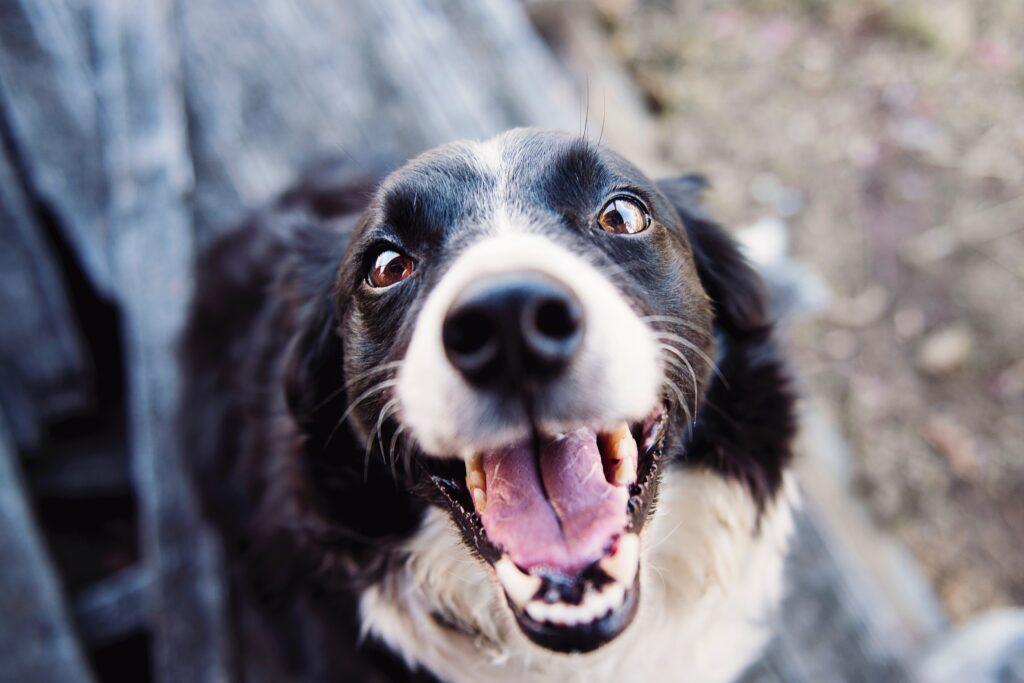
This medication stops cartilage loss in the joint and helps to restore lubrication , relieve inflammation, and renew building blocks of healthy cartilage. It is also one of the only medications that can help slow down arthritis.
I find patients with meniscus tears see results rather quickly with Adequan therapy, especially if they also have arthritis findings.
It is very safe, with basically no side effects in their study groups. Much safer than NSAIDs and anti-inflammatory drugs.
Can be administered at home after a prescription is given.
This can be very helpful when used in conjunction with our brace for CCL tears and meniscus issues.
This is why we, at Posh, recommend this injection for any dog with a knee injury. For more information you can leave a message on our contact form or visit our Facebook Page.
Read reviews check out our Google Reviews online. Click Here
Today I want to talk about surgery vs. bracing, and why we suggest bracing first.
First off, not every patient is a good surgical candidate. Be it weight, age, anesthetic risk, liver enzymes, poor health, or maybe the owners don’t have the $10k saved that it will take to fix not only the first knee, but the second knee that will go eventually once surgery is done.

Screws coming out, plate failure, angle was done incorrectly, bone fractures are very common, especially with large breeds doing TTA surgery, and infection is also very common. I have had several patients come to me that have been fighting infections for almost a year, such as mrsa, due to the surgical site not being sterile!
Unfortunately, some have the leg amputated due to complications. Also, if the angle is done improperly, they will start to weaken the ankle and hip joints, as things are not in alignment any longer, and start breaking down. Complications are common, and unfortunately some cause irreversible damage. I have even seen some patients have surgery done on the wrong leg, and yes that actually happened!
Also, 1 in 4 dogs that have surgery have lifelong lameness! With bracing, we don’t have any complications, or risk. Our patients are able to place full weight on their affected leg within just a few hours of receiving the brace. They can go for walks right away, which we will encourage. We also do physical therapy from your home, to help build the leg up and muscles, as well as Passive Range of Motion to help build strong tissue. We also go over diet and supplements, to give you the best outcome.
Just remember, you can’t undo surgery complications, but with conservative management there is always more we can do. Surgery should be a last resort. If you have any questions you can contact us on or contact form or visit our Facebook Page.
Read reviews check out our Google Reviews online. Click Here
Today I would like to discuss diet, and what is best to feed a dog with a ligament injury. I get a lot of questions regarding if you should feed your dog a grain free diet? Answer: yes, you should. So the reason is, gluten and grains such as corn are some of the more inflammatory foods you can feed. We actually want to take down the amount of inflammatory foods that we feed, and not be adding that to the diet. So you want to be looking for gluten and corn free diets if possible.
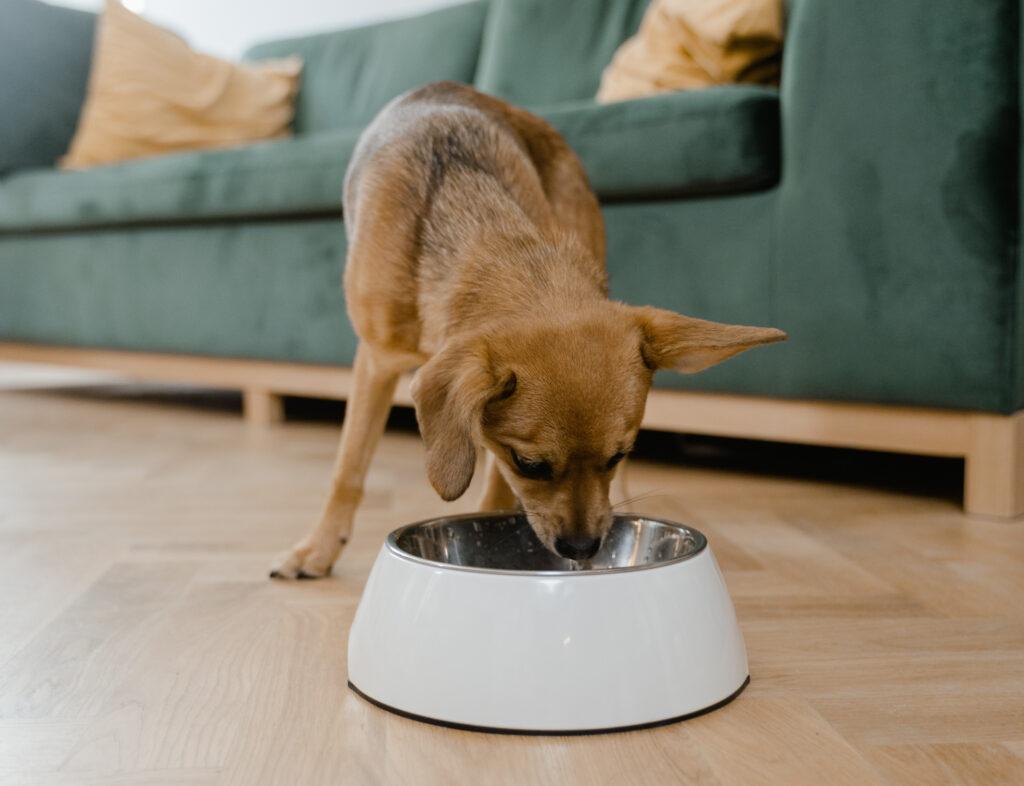
The next thing to go over is protein. We want to find a really high, good quality, protein source diet. Some people like to feed poultry, I prefer beef, salmon, or venison. Also, you really want to make sure to check the label. It should not say “by product of.” If it says by product of, or chicken by product, that is garbage, please do not give that to your dog. Protein is really important for dogs, as it has amino acids, which are muscle building blocks. So, without those quality protein amino acids, your dog can’t form muscle, and really can’t get that strength back that we need during this healing time.
Some healthy additives to supplement diet are sweet potatoes. Sweet potato is a safe source of amino acids as well. I personally feed salmon and sweet potato, because my dogs have a lot of energy. Another thing to add is celery. Celery can remove uric acid, which causes and makes arthritis form. This can make an injury more painful. So, we want to take out that uric acid. Another additive is fish oil. Fish oil has a great source of omega-3 fatty acids. Omega-3’s are helpful in reducing inflammation, and lubricating joints. You can also add coconut oil, in small amounts. This also contains healthy fatty-acids and aids in lubrication of joints.
Thanks, and please let us know if you have any questions! You can contact me through our contact form or visit our Facebook Page.
Nikki, Posh Lead Veterinary Technician
Read reviews check out our Google Reviews online. Click Here
I want to talk about possible home hazards today, and things that we can do to make the recovery process smoother for our dogs. The first home hazard thing that I want to discuss is slippery floors. Our poor dogs trying to walk on slippery floors can have a real challenge. They are usually digging in those nails, slipping, and can cause a real injury.
Commonly we see groin sprains, muscle tears, and even CCL tears from this. Even with a brace on, they could injure the other leg, so it is a really good idea to cover those slippery floors for our dogs who are injured. You can also separate the carpeted area from the slippery part with child gates or something to block them from walking on the slick floor. Then you can leash walk them very gently through that slick area.
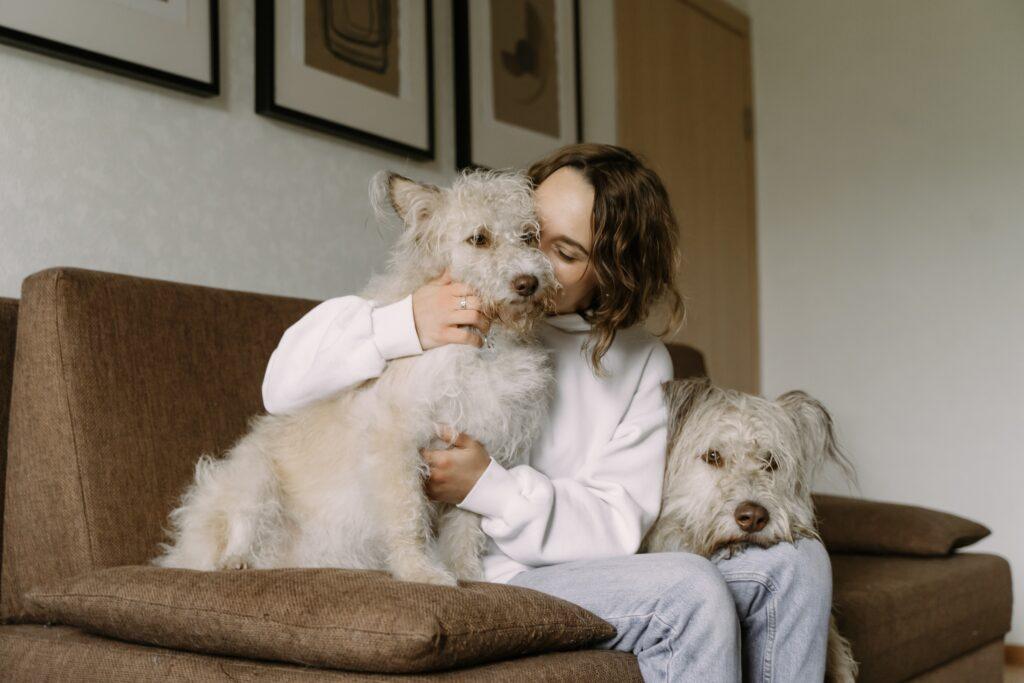
Another thing to do is put carpet down, with runners on the bottom. This is usually the easiest, and gives your pup a pathway that they can go from room to room.
Also, there is a great product called Dr. Busby’s Toe grips. These actually go onto the dog’s toenails, and give them full traction for slick floors. This way they can go through the house without worry, and will keep them from slipping and sliding. You can try dog shoes or boots, but usually dog’s don’t like having something around the foot area. Toenails they usually don’t mind, but the foot pad is sensitive.
When your dog is going up the stairs, they are using those back legs to push off. It is really important, if you don’t have a brace yet, to use a sling to help your dog up the stairs. Going down the stairs is not as big of a deal, as they are using more of their front legs, but I would still like to have either a sling, or a leash, to make sure they are taking things slowly.
Lastly, let’s talk about dog doors which is another hazard. If your dog has free access to going outside with a dog door, please block this off during the recovery process. You can also fence off a small area in the grass, so they only have a small area to go to, but trying to go through the door with a brace on is not a good idea. I know they are convenient, especially when we are gone, but please don’t let a dog have access during the day with their brace on, or injury could result.
Again, please let us know if you have any questions about way to protect your dog from these home hazard, we are happy to help! Contact us on our contact form or visit our Facebook Group.
Read reviews check out our Google Reviews online. Click Here
Today I want to do a quick brace comparisons with our brace vs. a hard casted brace. We get asked a lot of questions about what separates us from a casted brace, and today I will answer those for you!
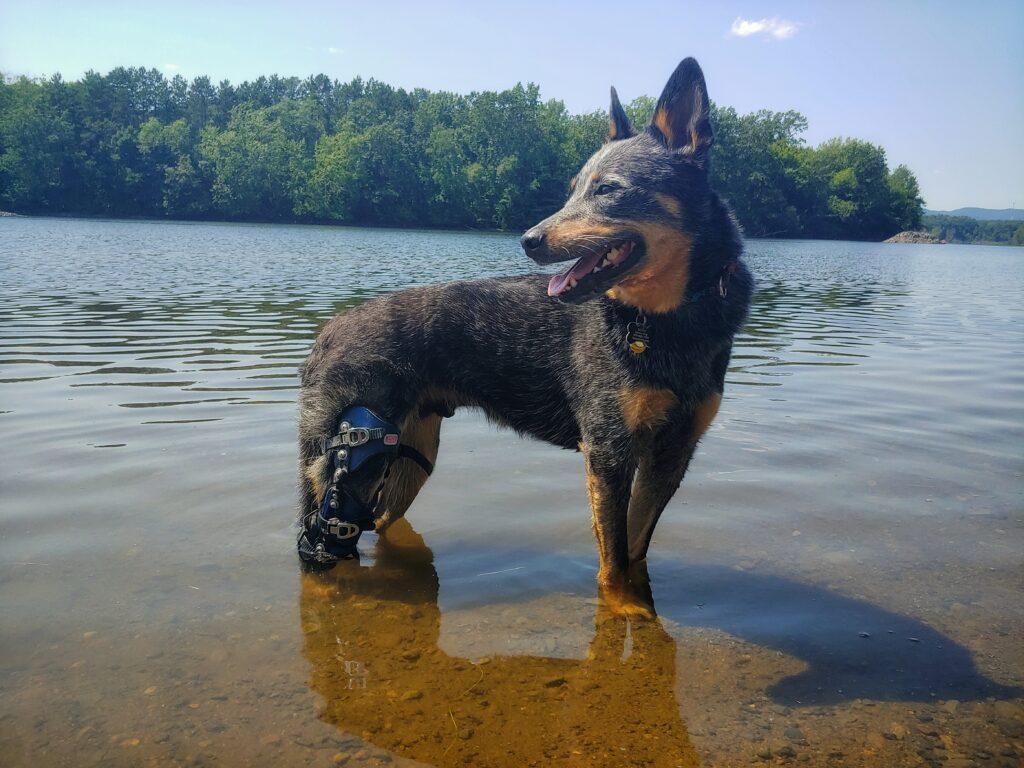
First off, a casted brace is made of a very hard plastic, with basically no flexibility. This makes it difficult for patients that have muscle atrophy, as the brace will no longer fit properly once you have re-built the muscle back, as with our Posh Brace. The Posh Brace gives much more flexibility, while still having adequate support. We feel this is similar to wearing a good quality shoe. You want something with good arch support, but not something hard and unforgiving.
Another thing that separates our brace from a casted brace is Velcro straps. One thing Velcro does very well is collect dog hair. Having Velcro straps on a brace made for a dog means you will be constantly replacing those straps, as they get filled with hair. With our posh brace, we only use high quality ladder straps and buckles, similar to a ski boot or inline skate.
Also on the casted brace you will notice there is a Velcro strap with a thin pad that is supposed to support and stop the tibial thrust or forward movement of the knee. Our posh brace actually uses a shell and ladder strap to stop tibial thrust, which is much more reliable than a thin pad and Velcro.
With our Posh Brace, we use Micro-buckles, which makes the Posh Brace more weather resistant. We have patients in Arizona in the heat, as well as in the arctic in Alaska. They can get wet or muddy, and with a simple rinse look back to brand new. Our straps are also very easy to adjust, so we can again accommodate for atrophy or changes in muscle. All 3 shells of our brace are adjustable with our technician’s assistance, so we don’t usually need to have a brace shipped back for modifications, unlike with a casted brace. This will save you time and money, as we want your dog using their brace as soon as possible.
Lastly, with a hard plastic brace, it is pushing up into the groin more, without any forgiveness. This can lead to pressure sores and discomfort. With the posh brace, we use a very soft plush foam, that is much more comfortable in the sensitive areas like the groin and ankle.
Let us know if you have any questions, about other Brace Comparisons feel free to reach out! Also check out ouf Facebook page.
Read reviews check out our Google Reviews online. Click Here
Let’s talk about Rehab and Physical Therapy, and what the next few weeks will look like after a CCL injury and bracing. So, first off the first couple weeks we want to take things nice and easy. We are just going to incorporate Moist Heat, Range of Motion on the joint, and some light walking. We really don’t want to overdo anything, as there is most likely some mild swelling in the joint.
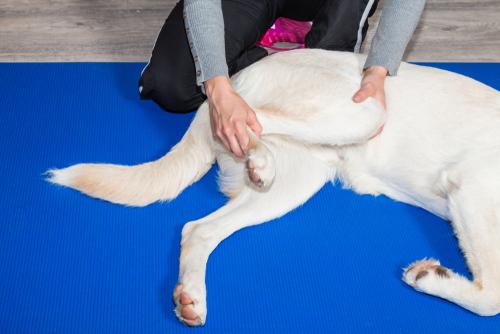
We have a schedule of Rehab, Range of motion, and walk schedules that we provide for each of our clients. We guide you over the next few weeks with different exercises you can do at home to help gain muscle and strength back on the injured leg.
Later into our schedule there will be different exercises, such as sit to stands. With the Sit to stand, we have your dog sit then stand, and offer a treat. Kind of like dog squats. These help to build the thigh muscle. Please do not do the sit to stands if your dog has a meniscal injury. If you are unsure, you can always ask your service Veterinary Technician. We have some demo videos on our FB page that will show you how to do each activity.
Another activity is called figure 8’s. This is where you will walk your dog around 2 chairs, or cones, in a figure 8 motion, then go back the other way. Another one is called curb work. For this one, you will have your dog standing parallel to a curb, and have them step up and down off of the curb, as you are walking straight. This really works the inner and outer thigh muscle, kind of like step aerobics.
A lot of our patients come with different stages of atrophy in the muscles, and with any injury it is very important to build on these muscles to get better.
With the brace they are able to put full weight on their leg, so even if you just walk your dog twice daily, this will really help. This may result is soreness for the first couple weeks with bracing and walks, but you will see this subside as they get stronger. Please let us know if you have any questions! For more information contact us through our contact form. Check out on our Facebook Page!
Read reviews check out our Google Reviews online. Click Here
Hey everyone, today we want to discus all the different bracing myths out there, and try to clarify some of the brace myth. There is a lot of information out there, and sometimes it is difficult to sort through what is accurate, and what is false.
The top writing services are not exactly the same as those offering writing services from https://apapers.org/, editing services, proofreading providers and SEO services. So before hiring such a service be sure to know what it does and how it can assist you.

Truth: It is actually the opposite. Unlike with surgery, with bracing your dog can immediately start placing full weight on their injured leg. This stops the overcompensating on the opposite side, and lets them begin using that thigh muscle again. Because they are able to place weight again on the injured leg, they are able to start strengthening that thigh muscle.
Truth: Bracing does not cause arthritis, the movement going on in the knee is what will cause arthritis. So, doing nothing will probably end up causing arthritis to form down the road. With bracing, we are stopping that movement, holding the knee where it needs to be in order for scar tissue to form adequately. This process takes about 9-12 months. There is no evidence that shows bracing causes more arthritis than surgery.
Truth: Although some companies experience this with their braces, here at Posh we do not. Our brace has several components that help to keep the brace up, without straps or slings. We have a hock wrap around the ankle, then the brace attaches to the front of the hock wrap, and we have 3 straps holding up the brace. When things are properly adjusted, there is no sliding.
Truth: There is not a brace company that can guarantee that a dog will fully recover, just like with surgery there is no guarantee that your dog will not have lameness. We do the best we can with bracing, physical therapy, and supplements.
Truth: Most patients use the brace for 9-12 months. Once we hit the 12 month mark, we can usually start weaning out of the brace, depending on the initial injury. Meniscus tears may need a little longer than just a CCL tear. If your dog has arthritis present when you start bracing, you may want to use the brace a bit longer.
If you are interested in anymore information you can contact us through our contact form.
Read reviews check out our Google Reviews online. Click Here
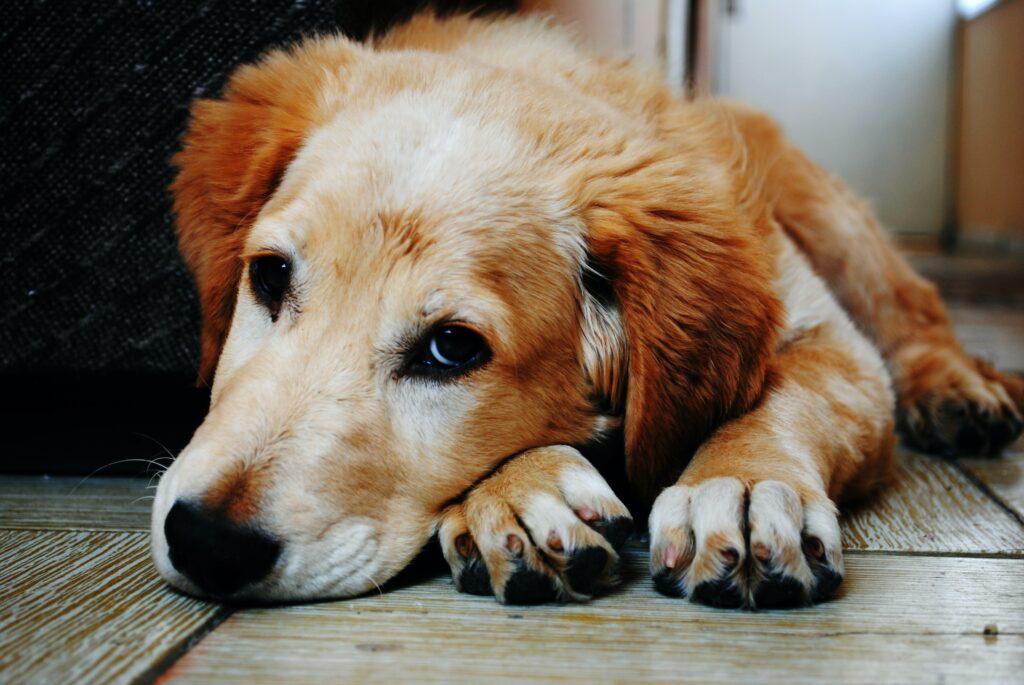
We have a lot of questions regarding supplements, and we want to go over a few of those today that will really help with the recovery process. Most patients that come in are on some form of prescription pain relief/NSAID, such as Carprofen/rimadyl, meloxicam/Metacam, etc. While these may seem to work initially for pain relief, we really suggest switching over to a more natural approach that will be safer long term.
NSAIDs, like carprofen, can cause long term issues with the liver and kidneys, and can also cause GI bleeding and issues. They can also delay healing, which is not what we want with an injury. Because of this, we like to recommend a safer alternative, such as something with White willow bark if your dog is in need of more pain relief. Please note that you should ask before giving supplements along with prescriptions, as some medications can interact with each other, such as willow bark and NSAIDs.
Some of the supplements that we suggest are: green lipped muscle, turmeric golden paste, boswelia, white willow bark for pain, glucosamines, Cartilage, Bone broth (1-2 tablespoons). Egg powder for muscle atrophy. CBD oils can also be great for chronic pain and inflammation.
Posh Dog Knee Brace Supplement & Support Recommendations
Supplements
Nupro Silver Powder, it comes in various sizes. This outstanding nutritional supplement for joint and connective tissue health contains glucosamine, sea kelp, shark cartilage, and many other beneficial ingredients. It can be bought off their website, or many other online retailers. https://www.nuprosupplements.com/Joint-Immunity-Support_c_27.html
GlycoFlex Plus, an advanced joint support supplement for dogs of any age, is clinically proven to increase hind leg strength up to 41% in just four weeks. It can be purchased through their website, or other online retailers.https://www.vetriscience.com/index.php?l=product_detail&p=9009205120
Turmeric, gold paste is the most common use. (The suggested dosage is approximately 15 to 20 mg per pound of body weight in dogs. This is approximately 1/8 to a 1/4 teaspoon per day, for every 10lbs of body weight) Or 1 crushed pill-450mg-95% curcuminoids + black pepper for increased bioavailability. Some pups can not tolerate the pepper, so make a small batch and see how it works for your dog.
Green Lipped Muscle, this is already in the Glycoflex Plus but if you decide not to use it this should be added to your dogs supplement list. A rich source of omega fatty acids and minerals, this is a natural anit-inflammatory and excellent source of glucosamine and chondroitin.
Spirulina Powder, 1 tsp with food daily. Spirulina strengthens the immune system and overall health of your pet. It can be bought at www.nowfoods.com You can read about the benefits on the following site- https://www.dogsnaturallymagazine.com/benefits-of-spirulina/ https://www.dogsnaturallymagazine.com/is-it-safe-to-give-dogs-spirulina/
Boswellia Extract-Reduces inflammation and overall joint pain. This can also be bought from www.nowfoods.com
White Willow Bark with Pineapple Bromelaine- A natural aspirin and pain reliever
CBD Oil-I prefer Kingkanine 300mg, suspended in highly beneficial krill oil. CBD oil is great for overall wellness and decreases chronic pain and inflammation in the joints. Use our code for 10% off-Poshdogknee10 https://kingkanine.com/collections/king-kalm-cbd/products/king-kalm-cbd-300
Keep in mind that not all supplements work, or are safe for all dogs. While most the ones we list are all natural, please take the time to do your research and make sure nothing will interact with any illness, disease, or medication your pet may have or be on. If you are unsure please speak with your Veterinarian or a Holistic/Homeopathic Dr.
We listed a wide range of products and there is some overlap on them-so pick what your pet needs and buy based on that. You do not have to buy every one of these products.
Support
Dr Buzzby’s Toe Grips– These give amazing traction to your dog. Dogs with CCL injuries tend to have trouble with traction after the injury and during the healing process. These eliminate slipping and reduce the risk of reinjury by slipping on slick floors.https://toegrips.com/
PetSafeSolvitCareLift Full-Body Lifting Harness- You can choose to use just the hip section or both. This gives you and your pet peace of mind and aids you in helping them when they are not weight-bearing well. https://www.amazon.com/gp/product/B008EXJIG2/ref=oh_aui_detailpage_o00_s00?ie=UTF8&psc=1
If you are interested in more information you can contact us through our contact form.
Read reviews check out our Google Reviews online. Click Here
Today I would like to talk about Moist Heat and icing, and when to use both of these. So when we have an acute injury, ice is the first choice. We have lots of swelling and tissue inflammation initially, so we want to use Ice, which will vasoconstrict the blood vessels, and slow down the bleeding/swelling. When we use ice therapy, I prefer to use a gel ice pad that can be left in the freezer. Frozen veggies or popcorn kernels can also work if you need something quick.
Apply the ice pack for about 15 minutes two to three times daily, until swelling is better, or about a week or two after the initial injury. This also helps with pain initially, by taking the pressure and swelling down.
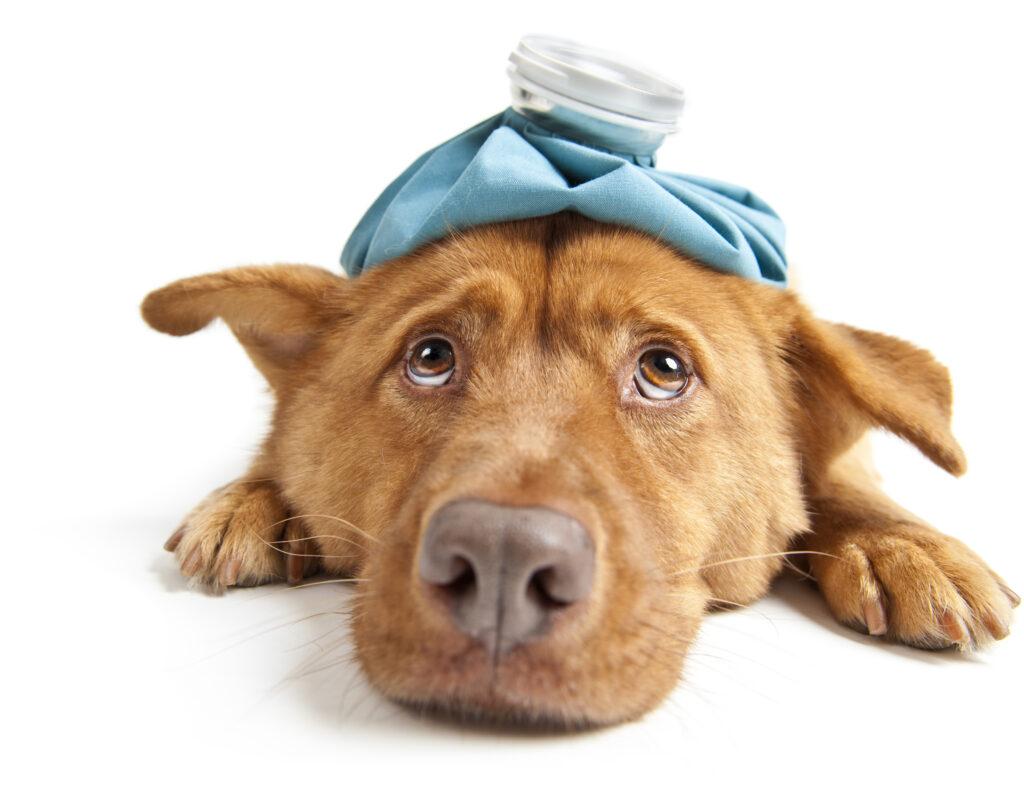
It is important not to do moist heat too quickly after a joint injury, as heat will vasodilate and increase blood flow to the affected area. We don’t want to do this when we have an initial injury with swelling present. After the first 2 weeks, we can start the transition to moist heat.
Now when applying an ice pack, a nice tip is to wrap the ice pack with warm wash cloth. This is a nice gradual cooling, instead of the initial cold shock. Your pup will thank you!
After 2 weeks, we will be switching to moist heat. To make your own moist heat, simply fill a sock with white rice (I double layer mine for washing). This makes a nice moist heat when you warm it in the microwave for 1-2 minutes. Wrap in a towel to make sure we don’t burn our pups.
Moist heat is different that dry heat, like an electric pad. Moist heat gets better penetration into the tissues, and is a very good pain relief. It opens up the area, so that our supplements can penetrate the area. Our knee does not have a great blood supply, so it is good to help with moist heat as much as we can. Do this 2-3 times daily for 15 minute intervals.
I like to do this before we walk, or start physical therapy. It relaxes and makes the knee comfortable. Do this process for up to 12 months, especially with meniscus tears. If you pup is sore after a walk, you can also do icing after the walk as well. Please let us know if you have any questions! You can contact us through our contact form or check out our Facebook Page for more information.
Read reviews check out our Google Reviews online. Click Here
Today let’s go through a few questions regarding scar tissue. I hear a lot of misconceptions regarding this topic, and today would just like to clarify things a bit more. I hear a lot of recommendations of “oh, just wait 8 weeks, and see how it goes.” I just want to clarify that this is not correct, it will take much longer for scar tissue to mature, and 8 weeks is not enough time.
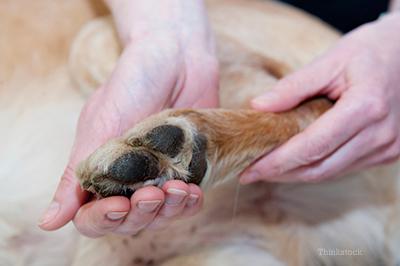
Let’s talk about the mechanics of the knee. The front of the knee is composed of 2 main bumps, the patella and the tibial tuberosity. The tibial tuberosity is on the Tibia bone, and above this sits our menisci. Then we have the femur bone above, with the patella. When we have a CCL tear, the bottom bone, or tibia, will thrust forward, causing abnormal movement in the knee. This is called Tibial Thrust. This is what your veterinarian will check for in the clinic. It may also be called a drawer sign.
So, scar tissue starts forming immediately , once the body has an injury to a ligament, to stop this movement. Basically, with conservative management, we are externally supporting that joint, allowing scar tissue to form, until we get to a point where there is no longer any movement.
Scarring takes 6 months to form to the juvenile state, and 9-12 months to fully mature. We suggest using the brace during any active times, to help this scar tissue heal. Any movement without the brace could lead to a re-injury of the scar tissue, and this could set us back a bit.
So, with a tear, we commonly see a lot of re-injury initially, before bracing. This can be a cycle until we get a brace on the knee to stabilize things. A re-injury is easy to do during the juvenile state. If this happens, just keep rested for 1 week, and resume our Physical Therapy schedule along with bracing. Too much too soon is not a good thing, this is not a race.
This is why it is so important to include Physical Therapy with our bracing, so that this scar tissue forms in the pattern we want it to. Range of motion allows the scar tissue to form in a healthy manor, and be more flexible. We do not want hard/stiff scar tissue to form, as this will decrease our mobility down the road. Please let me know if you have any questions! You can each me at poshintake1@gmail.com or you can send us your question on our contact form.
Check out more information on our Facebook Page if you are interested in purchasing a brace you can purchase a knee brace or elbow brace at our store. The Posh Dog Knee Brace is a 100% custom Dog knee brace, hand made only for your Dog. We make our custom brace with no casting. Our state-of-the-art brace for Dogs is very durable, waterproof, sand proof, and easily adjustable by customers. Our Veterinary Technicians provide personal live video supervision of measuring, and fitting of your Dog ACL brace in the comfort of your own home.
The Most Comfortable Dog Knee Brace For Dogs With A Torn CCL/ACL!
Read reviews check out our Google Reviews online. Click Here